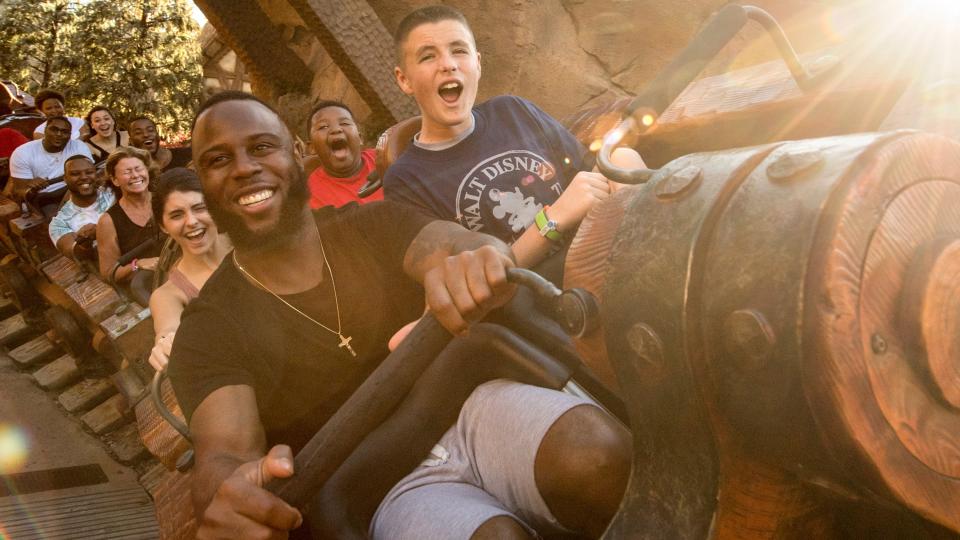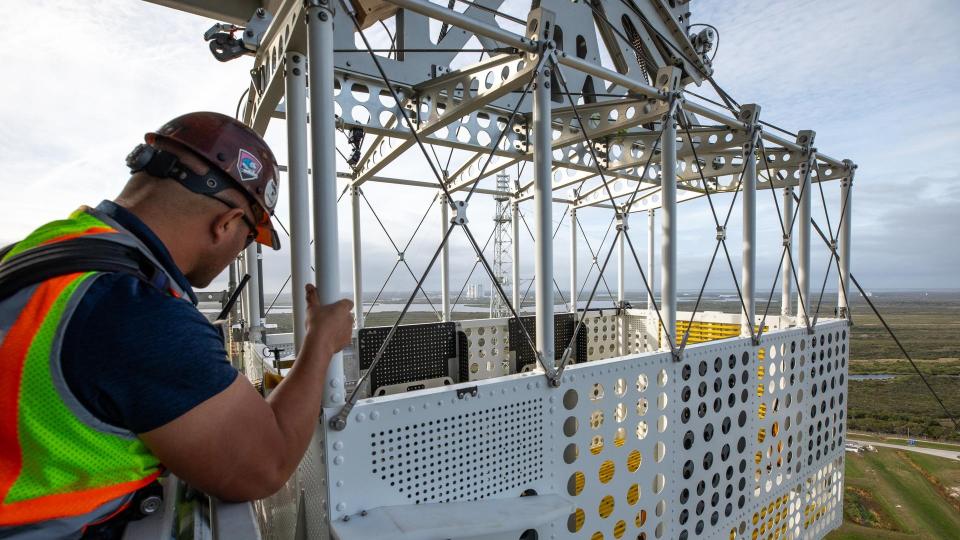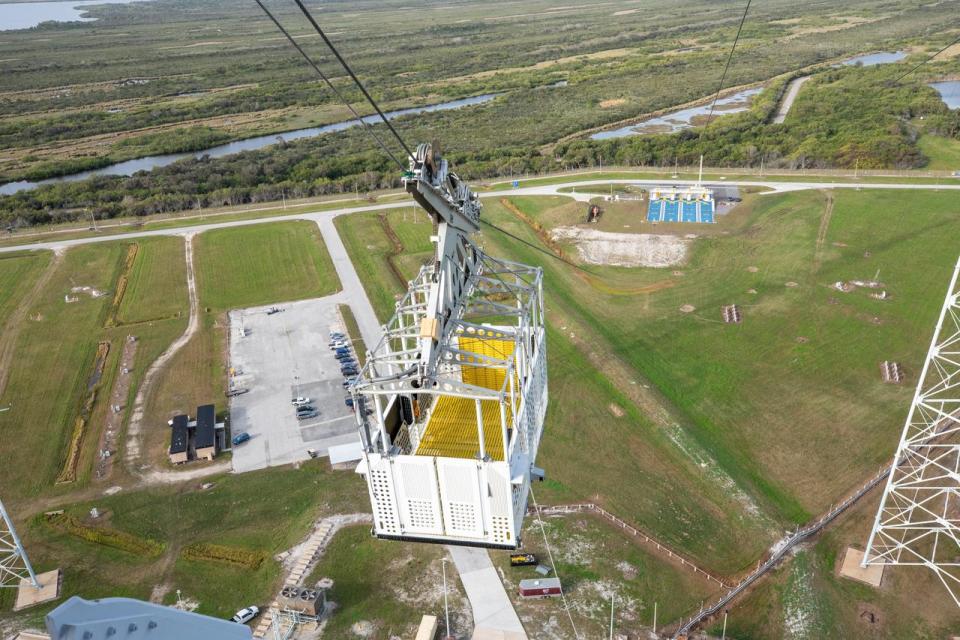When you buy through links on our articles, Future and its syndication partners may earn a commission.


NASA is borrowing from local theme park knowledge to keep its Artemis astronauts safe during moon launches from Florida.
Teams with NASA’s Artemis program — which aims to send astronauts to lunar realms, starting with Artemis 2’s round-the-moon effort in 2025 — met with representatives from “a central Florida amusement park” recently to discuss braking systems for a rocket escape system.
NASA did not name which park in a press release issued on Friday (Aug. 9), but its launch pad at Kennedy Space Center (KSC) near Orlando is less than an hour’s drive from Walt Disney World Resort.
“We have neighbors 50 miles [80 kilometers] from us in Orlando that are essentially the world experts on magnetic braking systems,” Jesse Berdis, a mobile launcher deputy project manager for NASA’s exploration and ground systems, said in the release. (That’s the approximate distance from KSC to Disney World.)
Related: Watch how NASA’s Artemis astronauts could escape their rocket in an emergency (photos, video)
Roller coasters around the world employ an eddy current braking system, which uses magnets to slow vehicles down on the rides’ twists, turns and falls. NASA, meanwhile, designed a gondola-like escape basket system for astronauts to get away quickly from the Space Launch System, the rocket tasked with launching Artemis missions to the moon, in case of emergency. That system also uses eddy currents.
While NASA only uses its gondolas for contingencies and for training, the agency wanted the opportunity to talk with people who work with these systems regularly, to see what else could be learned.
“The maintenance crews [at the amusement park] were awesome, because they showed us their nightly, monthly and yearly inspections on what they were doing,” Berdis said. “That gave our operations teams a really good foundation and baseline knowledge of what to expect when they maintain and operate this system for the Artemis missions.”
Based on these conversations, NASA will add an acceleration sensor during testing in the egress baskets, to show how fast these vehicles are moving as they slide 375 feet (114 meters) to the ground.
Related: ‘That’s part of space exploration’: Artemis 2 astronauts unfazed by moon mission delays (exclusive)


Artemis 2’s astronauts include NASA commander Reid Wiseman, NASA pilot Victor Glover (who will become the first Black person to leave low Earth orbit, or LEO), NASA mission specialist Christina Koch (who will become first woman to go beyond LEO) and Canadian Space Agency astronaut Jeremy Hansen (the first non-American to go beyond LEO).


RELATED STORIES:
— US must beat China back to the moon, Congress tells NASA
— Astronauts won’t walk on the moon until 2026 after NASA delays next 2 Artemis missions
— 55 years after Apollo 8’s Christmas at the moon, a new Artemis crew readies for launch (exclusive)
Artemis 3 is the next moon mission after that, and may be a lunar landing. Artemis 3 is slated to fly no earlier than 2026, but its crew has not been announced and its landing is pending readiness of SpaceX’s Starship vehicle for humans.
The larger Artemis program is aiming for human landings near the moon’s south pole, to set up one or more bases there. NASA is leading a group of dozens of nations under the Artemis Accords, A few of those countries are directly contributing to moon missions, and others are joining for space policy goals under a U.S.-led peaceful space exploration framework.
